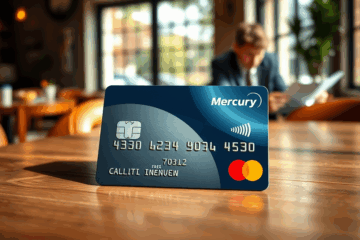Credit Cards with Miles or Cashback Which is Better
Credit Card rewards can play a significant role in how you manage your spending and save for the future.
In this article, we will explore the differences between credit cards with miles or cashback rewards to help you determine which option best aligns with your financial habits and aspirations.
Understanding your spending patterns is crucial in making an informed choice, as both options offer unique benefits.
Whether you prefer the immediate gratification of cashback or the potential for travel experiences with miles, this guide will provide clarity on which credit card rewards suit you best.
Decoding Credit Card Rewards: Cashback vs. Miles
Credit card rewards offer a compelling way to maximize the value of everyday spending.
With two prevalent styles, cashback and miles, consumers can tailor rewards to fit their lifestyles.
Relevant text emerges when considering the simplicity of immediate financial returns through cashback, compared to the aspirational allure of redeeming miles for travel perks.
Understanding these reward styles can enhance how credit card users navigate their purchasing decisions.
While cashback provides a straightforward percentage return on purchases, miles accumulate for potential travel discounts, stretching the value of each dollar spent.
This distinction matters because it aligns with personal financial goals, whether seeking everyday savings or aspiring for travel experiences.
Transitioning smoothly, consider these headline advantages:
- Immediate savings with cashback
- Travel perks through miles
Ultimately, choosing between these options depends on individual preferences and the flexibility these rewards provide.
The Straightforward Appeal of Cashback Cards
Cashback credit cards offer a straightforward way to earn rewards by accruing a percentage of each purchase you make.
This percentage ranges and accumulates over time.
Cardholders can then redeem these rewards flexibly, often as statement credits, bank deposits, or checks.
For example, some cards allow immediate redemption, making it easy to convert rewards into value.
Common categories where higher percentages apply include groceries, gas, and dining.
For instance, according to NerdWallet, some cards offer up to 5% on certain categories or stores.
Here’s a look at how different categories stack up in terms of rewards:
| Category | Reward Percentage |
|---|---|
| Groceries | 3% |
| Gas | 2% |
| Dining | 3% |
| All Other Purchases | 1% |
The Traveler’s Advantage: Miles Cards
Miles credit cards are tailor-made for frequent travelers, offering a variety of benefits that cater to their unique needs.
These cards allow users to earn miles based on their spending, which can be redeemed for flights, hotel stays, and other travel-related expenses.
The importance of airline partnerships cannot be overstated, providing cardholders with access to exclusive perks and enhanced redemption options.
Travelers can choose from different miles program types such as:
- General travel cards, suitable for any airline or hotel.
- Co-branded cards, which offer specific airline or hotel benefits.
- Flexible points cards, allowing conversion to various loyalty programs.
To maximize value, cardholders can strategize their spending and redeem points during peak seasons for complimentary upgrades that enhance the travel experience.
Utilizing the right card and strategically earning and redeeming miles transforms routine travel into an enriching experience.
Flexibility Face-Off: Cashback vs. Miles
For consumers weighing the instant value of cashback against the planning-heavy rewards of miles credit cards, understanding the core contrasts is essential.
Cashback cards offer straightforward redemption, allowing users to enjoy rewards like direct deposits or statement credits, simplifying financial management for those who appreciate immediate flexibility.
As noted on [Capital One’s resource about Miles vs Cashback Credit Cards](https://www.capitalone.com/learn-grow/money-management/miles-vs-cash-back), they cater to individuals desiring uncomplicated returns on their spending.
Conversely, miles cards appeal to frequent travelers aiming for maximum travel value through strategically redeemed miles for flights and accommodations.
Users must engage in advance planning to leverage these rewards effectively.
While cashback suits users with varied purchases due to its versatile applications, miles emphasize long-term travel planning, making them ideal for those prioritizing aspirational travel experiences.
Ultimately, the decision lies in whether one prefers the immediacy of cashback or the potentially lucrative yet preparation-intensive nature of miles.
Choosing the Reward Structure That Fits You
Understanding your spending habits is key to selecting the right credit card reward program.
If you’re someone who regularly travels, a miles credit card can provide great value when used for travel expenses.
Travel frequency becomes crucial in this decision, as frequent travelers can benefit from perks like lounge access or travel insurance found with travel credit cards.
You can explore options like those available through Capital One Credit Cards to see if they match your needs.
Conversely, if your purchases are primarily day-to-day necessities, cashback credit cards offer a simpler and more flexible reward system.
Consistent small purchases are rewarded with direct cash returns, making them highly attractive for everyday use.
Consider your goals and preferences, and choose a credit card whose reward structure aligns with your unique lifestyle and spending patterns, whether through travel experiences or immediate cash rewards.
The decision ultimately hinges upon how these benefits fit into your financial objectives.
In conclusion, the decision between cashback and miles credit cards ultimately hinges on your personal spending habits and goals.
Consider what matters most to you: instant cash rewards or the potential for enriching travel experiences.



0 Comments